10 of the Most Exotic Fruits on the Planet
10 of the Most Exotic Fruits on the Planet
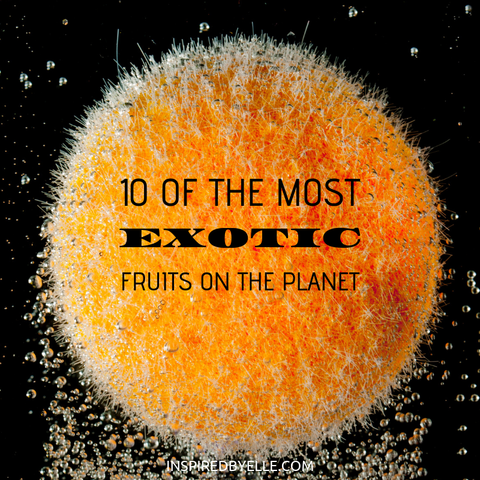
We all know and can enjoy the luxury of easily grabbing a favourite fruit from the corner greengrocer. Just imagine if you had to climb a tree, travel to exotic climates or indeed had to exert effort to obtain fruits. Indeed, everybody can easily recognize, and obtain an orange, apple, mango or banana with minimal effort. However, have you ever thought of being more adventurous and trying other exotic fruits available in other parts of the world?
Let us whip up your interest by looking at ten of the most unique, exotic fruits, some of which look like they are actually from another planet!
-
Cherimoya
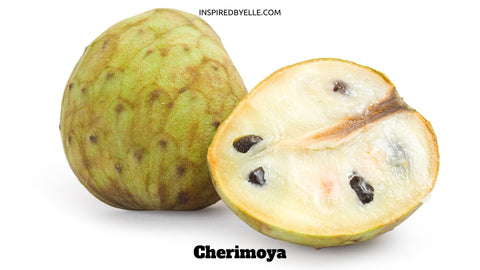
The Cherimoya is native to South America and tastes like a unique blend of pineapple, banana, and bubblegum. The white custard-like, soft flesh is what gives Cherimoya the nickname “custard apple.” It’s widely stocked in markets in Latin America and in grocery stores.
Above everything else, the Cherimoya resembles ice cream in many ways. It will literally melt in your mouth just like cream does and it’s also known to have dysentery healing and fever-reducing properties. The ice-cream luxurious feel is only slightly dented by the fact that you need to avoid the seeds which can be poisonous.
Cherimoya has high levels of potassium, which is great for the control of heart rate and blood pressure. This fruit additionally contains GABA (gamma-aminobutyric acid ), a neuro-chemical in the brain sometimes known as "the euphoric amino acid" which calms and eases headache pain. Scientific tests have revealed this fruit has some anti-depression properties too.
-
Horned Melon (or Kiwano)
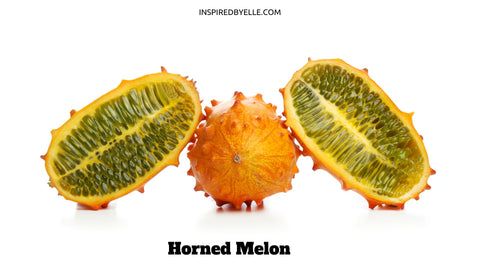
The name used in the Tropics for this exotic fruit is Kiwano and it’s widely eaten in South Africa. In East Africa, it’s called the Thorn Melon. When ripe, it has a yellow-orange tint on its hide and a green jelly-like lime flesh. The Horned Melon taste is similar to that of a lemon, banana, and cucumber combination.
Lutein is one nutrient of note that is present in the Horned Melon. Unfortunately, lutein and zeaxanthin, which are both powerful antioxidants cannot be produced by the human body. It is therefore important to consume foods rich in these nutrients, which tend to be green leafy vegetables.
Lutein and zeaxanthin both filter high-energy blue wavelengths of light, which are increasing present in artificial lighting and our electronic devices. The lens of the eye collects and focuses light in the retina, however throughout our lives oxidation of the lens occurs, causing eye disease, age-related macular degeneration ('AMD") and cataracts. It is therefore highly important to ensure that your diet has a good complement of lutein, zeaxanthin and vitamin E, which together have been proven to be a powerful force to protect vision.
The pulp of the horned melon contains lutein and the seeds which are also edible contain vitamin E, thus proving nature is a great source for the nutrients to keep our eyes healthy.
Finally, it should be noted that the iron present in the horned melon represents 13% of the recommended daily intake. This fruit also contains vitamin C to ensure the best uptake of the iron, to produce healthy red blood cells and good oxygen transportation.
-
Durian
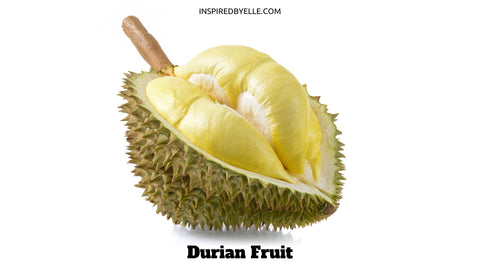
The organic sulphur in the Durian fruit explains its strange odour. It tastes like blue cheese and nuts with hints of several other fruits. The pulp tastes like almonds with a tinge of sherry-wine, cream-cheese, and onion-sauce. Perhaps the most peculiar aspect of this fruit is the unique combination of a delicious taste and an awful smell. Another thing about this unique fruit is that it’s known to trigger a sharp blood pressure increase when consumed.
This is nicknamed the "King of Fruits", not least because of it's size and texture but eating the fruit inside is somewhat of a bizarre experience. The smell is apparently like a stink-bomb, but the fruit inside is a delicious creamy custard with savoury tones as well. It's not cheap and will set you back the cost of two to three local meals in Vietnam. Nevertheless, this exotic fruit appears to be worth it's price and obtuse aroma.
Durian fruit does not mix well with alcohol, and it is believed that the sulphur-like components of this fruit, contain enzymes which prevent the metabolism of alcohol, and may therefore increase its effect.
-
Jackfruit
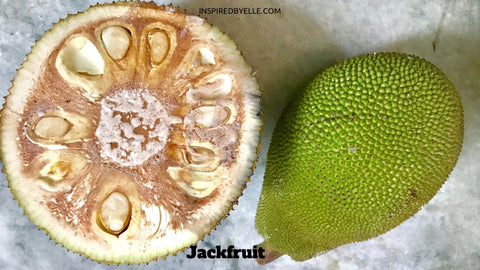
This fruit is huge being the world’s largest tree-born fruit. It’s capable of reaching up to 80 pounds in weight! This might be the fruit to end global hunger. The Jackfruit is a versatile fruit, good in terms of both its sweet and savoury preparations. It’s also available in a chip or dried form and makes an exotic snack when you are on the go.
The Jackfruit is also known as the "Jack of all Fruits", and maybe this tag name is due to a combination of factors. Firstly, this fruit can grow to a massive size of 55 kilogrammes (or 120lbs) in weight, with a single tree bearing 100 to 200 fruits per year. This makes the jackfruit perhaps our best contender for a sustainable global food source of the future. The tree is equally drought-resistant, survives in high temperatures and is easy to grow.
The flavour like many tropical fruits changes from savoury to sweet depending on its ripeness. Whilst green the taste is savoury with a neutral taste like the potato, allowing it to absorb seasonings well. It also has a stringy texture similar to meat in its unripened state. It forms a great meat substitute, and is already making appearances in Western food stores as an alternative food source.
It is packed with nutrition and has a low glycaemic index, making it great for those watching their blood sugar and can provide an energy boost as it is full of complex carbohydrates. It has lutein, zeaxanthin, vitamin A and beta-carotene which provide a great package for eye health. One other noteworthy benefit is the jackfruit's anti-ulcerative property and general digestive benefits.
-
Rambutan
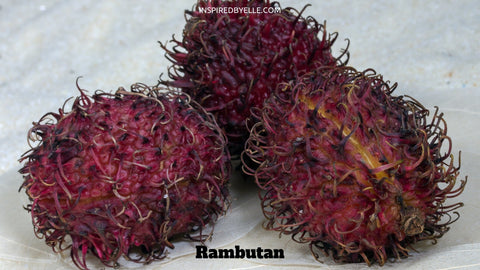
Get past the red soft spines and find a single inedible seed covered in moist, pale flesh that is rich in healthy fibre. Rambutan is common in Malaysia and Indonesia. The rambutan is a close relative of the lycee, and is very similar in taste and texture. It’s great for your skin, gut, and overall wellness as it has antimicrobial and anti-carcinogenic properties.
This exotic fruit is rich in dietary fibre, as well as many vitamins and minerals including vitamin C, B3, iron, copper, manganese, phosphorus, potassium, zinc and calcium. Within the body, the fruit prevents cell damage and helps with the synthesis of blood cells.
The name of the fruit derives from the Malay word, 'rambut', which means "hair" and makes reference to the curly spike-like structures covering the red-orange fruit. Interestingly, the leaves of the rambutan tree, can be crushed and mixed with water to form a paste to condition and strengthen the hair.
-
Pomelo
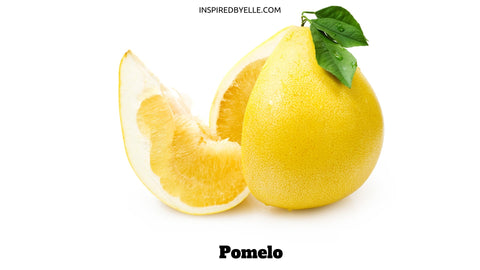
Try and picture in your mind the biggest grapefruit which you have ever seen. Now think seven times bigger and you have the Pomelo. Basically, this can only be described as a cousin of the grapefruit but on steroids. Once you manoeuvre past the outer thick layer you can enjoy the luxury that comes from the big and juicy citrus segments of the Pomelo.
The Pomelo is the largest member of the citrus fruits, and can grow up to a massive diameter of 30 centimetres. Unlike its close relative, the grapefruit, the pomelo is much sweeter and lacks the sharp, tart taste.
Two notable health benefits of the pomelo are in relation to blood pressure and weight maintenance. This fruit contains 216 milligrams of potassium per 100g of the fruit, which helps to reduce blood pressure, promotes blood circulation and the oxygenation of the body. It contains fat-burning enzymes which can decrease sugar and starch in the body, to help in weight loss regimes.
-
Buddha’s Hand
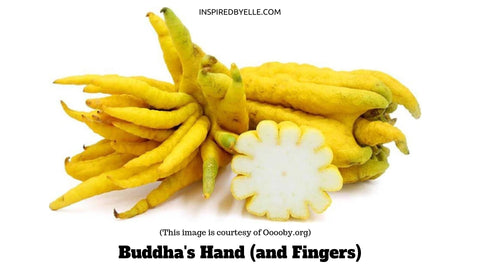
Buddha’s Hand resembles a mutated lemon and can be used in the same way. This unique fruit that is found in India and China has a powerful aroma, so use it wisely. Break off one “finger” of Buddha’s Hand and grate it over your salad dressings, baked goods, or marinades for a pinch of zest.
The name of this dramatic looking fruit, makes reference to the hand and fingers of Buddha. There is a preference to the fruit bearing the "fingers" closed therefore, due to the resemblance of Buddha in prayer. The finger-like sections of this fruit open with ripeness.
The buddha's hand has traditional value, and is given as a religious offering in the Buddhist religion. The Chinese believe that this fruit offers Feng Shui value, as it is believed to bestow luck, prosperity and peace. It is also used in traditional Chinese medicine for stomach complaints, chest pain and lung issues.
Several medical studies have identified Buddha's Hand as having several beneficial flavenoids, and useful compounds like limonin, nomilin, stigmasterol, beta D-glucoside, limettin, scopoletin, and umbelliferone. It is suggested that the fruit may also have anti-inflammatory and anti-cancer properties.
-
Yangmei

This fruit is also known as Chinese Bayberry. The Yangmei is round, has brilliant red appearance, and looks similar to strawberries. The interior is lighter in colour, sweet and very tart. Inside you get a single seed that can be eaten as it is. A juice produced from Yangmei is called “Yumberry”. Often, this exotic fruit is dried, canned or even fermented to make alcoholic beverages.
The Chinese Barbary is worth getting into your diet, if you can locate it. This fruit is a rich source of oligomeric proanthocyanidins (OPCs), which are indeed the most powerful class of free-radical-scavenging antioxidants. Research suggests this is somewhat of a power horse, at a potency of twenty times greater than vitamin C, and fifty times vitamin E. These benefits are a perfect way to protect against ageing, cardiovascular issues and degenerative disease. OPCs also lower blood pressure, LDL cholesterol and generally boost the immune system. They strengthen and increase the collagen, which of course improves the appearance of the skin.
-
Pitaya (or Dragonfruit)
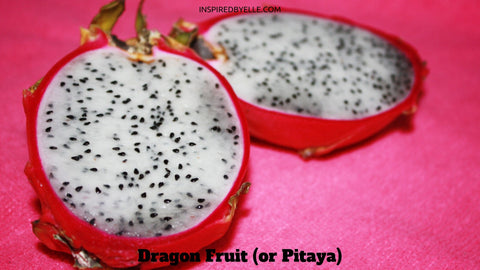
Also known as Dragonfruit, this is an exotic fruit that is packed with unique health benefits. Crack open Pitaya’s scaled, gnarled exterior and find the snow-white coloured richness of flesh tiny black seeds that are not only, sweet and nutty but amazingly low on calories. The Dragonfruit can deliver a version with a flamboyant fuchsia interior too.
The Pitaya originated in Central America but now also grows across much of Southeast Asia.
The Dragon Fruit is one of those fruits which conjures up spectacular imagery, as if you will enter a magical, fairytale world. This fruit does not disappoint as the inside of the fruit is similar to the kiwi, but with a bright white or cerise interior.
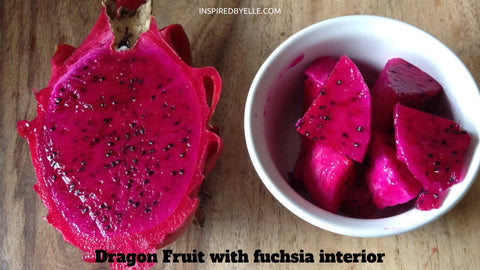
Added to this, the fruit has some great vitamins like B1, B2, B3, C, iron, calcium and phosphorus. It is likely an antioxidant that you may not have heard of, but it is a superfood which is packed with health benefits. It helps against ageing, diabetes, arthritis and even combats acne. It also boosts your immune system and improves the digestion.
It can be used in fruit salads, fruit salsa, smoothies and can even make a tasty jam, but is probably best consumed as the raw, ripened fruit.
-
Bael
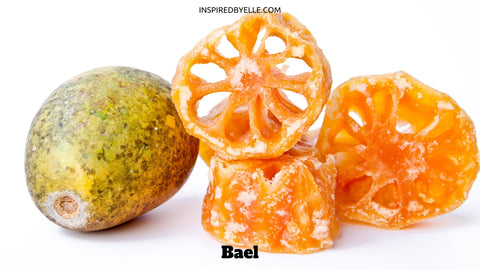
Native to India, this dull-coloured fruit is found throughout Southeast Asia. Thee Bael fruit is also called Wood Apple, given its hard, wood-like exterior, which requires the force of a hammer to break. Once you get inside, the pulp offers anti-inflammatory and digestive properties. It also helps battle ulcers, worm infestation, and even amoebic dysentery. One large bael fruit can give massive six litres of juice!
Indian people use this fruit in a variety of ways for treatment of several conditions, including inflammation, helping digestion, purifying the blood, controlling blood pressure and diabetes, and for the treatment of ulcers.
Why are Exotics Fruits worth your attention?
Well, we live in an age where there is so much interference with nature, and in particular, the foods we eat. It makes sense to consume exotic fruits, as they tend to be the way nature intended. Often rare fruits are not genetically modified, and are full of natural nutrients, vitamins and health benefits. Some health concepts, like Ayurvedic medicine encourages eating the colours of the rainbow. Exotic Fruits are perfect, as they are usually textured to protect their vibrant colour, sometimes just internally, however mostly this is not the case.
Disclaimer
This article is produced for entertainment value, and advice should always be sought from practitioners or medical professionals before undertaking any dietary regimes to ensure it is suitable for each individual.
Leave a comment
Comments will be approved before showing up.



